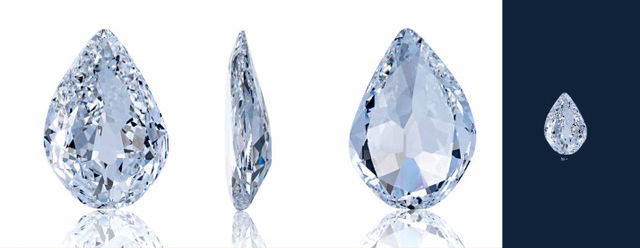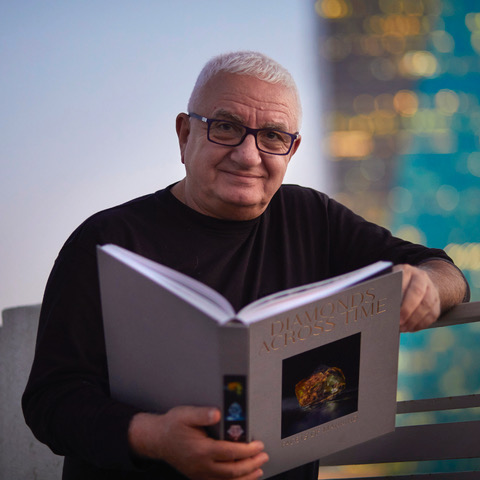Alex Popov, Founder, The World Diamond Museum & President, Moscow Diamond Bourse, articulates his thoughts on preserving the sanctity of diamonds, its deep links with humans and the importance of preserving the heritage and history of this magnificent gemstone.
Alex Popov founded The World Diamond Museum in 2016 — a unique and ambitious online project that preserves the history and knowledge of the diamonds and diamond jewellery. The museum runs several educational and research projects worldwide, including conferences, exhibitions and publishing.
In July 2018, the World Diamond Museum organised, together with Qatar Museums, the exhibition of ‘Pearls: Treasures from the Seas and the Rivers,’ at the State Historical Museum in Moscow. Since then, Alex Popov has organised several exhibitions, including ‘Pearls of Qatar’ in Moscow State Historical Museum in 2018.
In September 2020, the World Diamond Museum published the book “Diamonds Across Time,” the museum’s first proprietary publication in the series of The Facets of Mankind. The book was unveiled during the Virtual 39th World Diamond Congress. Alex Popov elaborates on the Facets of Mankind and the reason for publishing the book.
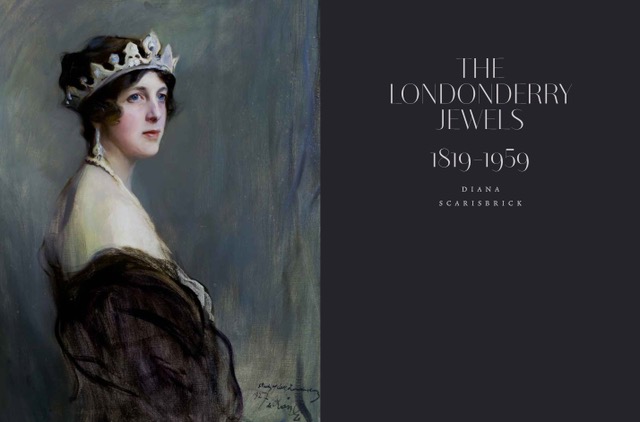
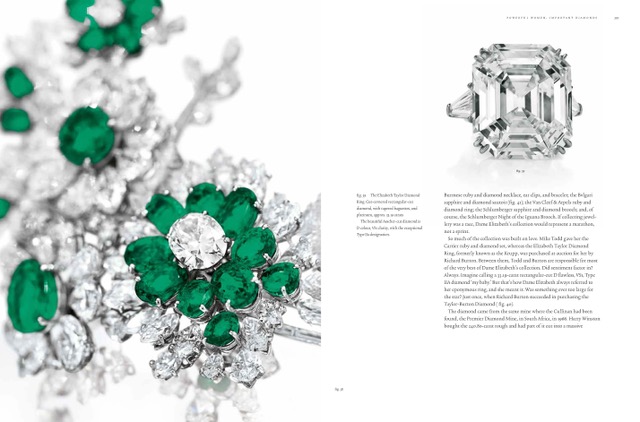
What is the mission of Facets of Mankind?
Throughout my career I have had the privilege to make the acquaintance of scores of people who are the guardians of public and private collections which most often remain inaccessible to the general public. Seeing and touching all these incredible pieces, I always felt the desire to share this knowledge. So, in 2014 I brought the renowned “India, Jewels that Enchanted the World” exhibition to the Kremlin in Moscow. That exhibition was extremely successful and put my mind firmly on the World Diamond Museum project.
Three years later, I gathered together several like-minded people from around the world and established the World Diamond Museum. We added the phrase “Facets of Mankind,” to emphasise the human relationship with this magnificent stone.
The goal is to preserve the heritage, conduct research and educate the people about diamond and diamond jewellery. First and foremost, by taking the diamonds out of the commodity basket into the world of art, history and culture – where they belong.
… and the reason you decided to sponsor this wonderful book, ‘Diamonds Across Time’?
As a matter of fact, we didn’t sponsor the book – we conceptualised, edited, designed, photographed and published it. We had sponsorships that we are very grateful for and mentioned them in the book. As for the reason – we have been busy participating in conferences and consulting other museums and organisations. This work has mostly remained invisible, so we decided to publish the ‘Diamonds Across Time’ and reach out to the industry and the general public. This is our Mission Statement, and we look forward to publishing more diamond research in the nearest future.
My favourite section was the essay by Derek J Content on Diamonds from Borneo. Any unusual stories or segments in the book that you are especially proud to have brought to light?
Among the ten distinguished authors are some whose names you may have encountered before. Others have been as active, but often in adjacent fields and featured in publications that are not necessarily read in our industry and trade. Just to relate to two of our authors, Derek Contents’s writing has been very broad and varied, and we’re lucky he did his research on diamonds from Borneo for us. René Brus has been researching royal crowns for many decades. The focus of his article on South-East Asia is unique to this book.
My favourite essay will be Stefano Papi’s one about the Romanovs’ diamonds. It gives us an exciting glimpse of the most exquisite diamond jewellery — set against the background of the most tragic story of the rise and fall of the powerful dynasty during six centuries.
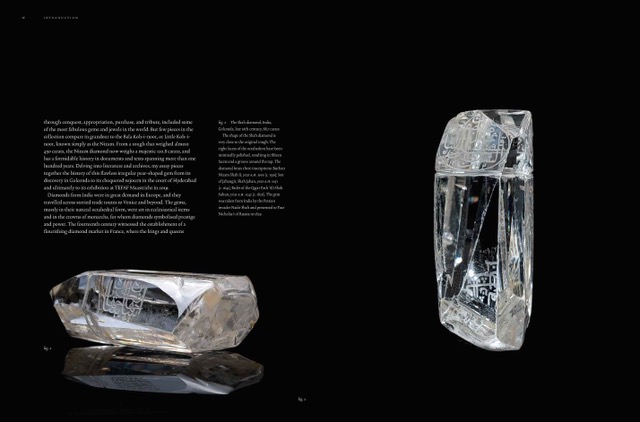
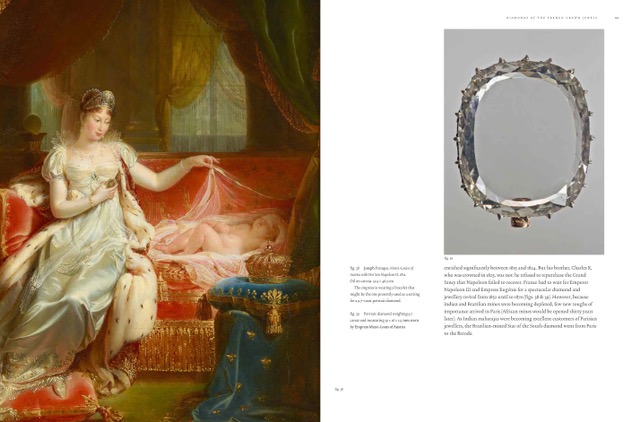
We have diamonds now made in laboratories, diamonds are also being made from the carbon in the sky. How do you think the role of diamonds will evolve in the coming decades?
The role of diamonds always was and will always be to symbolise human emotions and, in some cases, be symbols of wealth and power. That will never change.
In the last 30-odd years, small diamonds became commodities, not without help from the industry. In this category, both natural and lab-grown diamonds will follow the path of industrialisation and commercialisation.
Hence the importance of preserving the human touch; after all, diamond facets are the Facets of Mankind.
The book, ‘Diamonds Across Time’ is out, but how are you planning to circumvent the conventional methods of promotion such as physical book tours, talks, etc.?
If you had asked me this a year ago, I would have said that we’ll be launching the book at major museums, important gem and jewellery gatherings, and industry congresses worldwide; do the tours and lectures.
The Covid-19 crisis, with all its drama, deaths, and devastation, was like a tsunami, and a very bad one, from an economic and social point of view. But it has also swept away a lot of the barriers that we thought would take years to break through.
The promotion of the book will be done hand-in-hand with the advancement of our museum. We are moving slowly towards our goal – the creation and population of a full digital museum that will not only impact the industry but, more importantly, also the general public.
Recently, the International Council of Museums (ICOM) has accepted a definition of a fully digital museum, thanks to the approach we made at the last ICOM Congress in Kyoto. Again, this would have been very difficult to achieve as little as a year ago.
Naturally, this opens new opportunities to us, and of course, to the museum world at large. Rare diamonds will be showcased online but will also be displayed at exhibitions which are an integral part of the Facets of Mankind concept.
Having said that, we plan to start with the conventional methods as soon as the world finds ways to cope with the pandemic.
How would you differentiate the role of Facets of Mankind from that of the Natural Diamond Council?
The NDC’s focus is to promote natural diamond consumption and to support the downstream industry in this endeavour.
We see our place in the research, preservation and education of the general public about the human relationship with diamonds and diamond jewellery. With this, the World Diamond Museum compliments the efforts of the NDC and other industry bodies.
Facets of Mankind could very well become the historical and cultural ambassador of the diamond industry. We look forward to receiving active support from all the industry.
——————
Alex Popov is the Founder of The World Diamond Museum, President, Moscow Diamond Bourse and Chairman, Indo-Russian Jewellery Foundation. An expert in the diamond and jewellery supply chain, he frequently speaks at industry forums worldwide. After emigrating from the Soviet Union in 1980, Popov got involved in the diamond and jewellery trade. During the late 1990s, he worked in Switzerland, where he served Swiss watch brands’ diamond needs and ultimately established a successful jewellery distribution business.
In 2005, Popov was instrumental in establishing the first private diamond and jewellery bourse in Russia. His work and relentless efforts ultimately led to the Moscow Diamond Bourse (MDB) acceptance as a member of the World Federation of Diamond Bourses (WFDB). He became the MDB president in 2008 and in 2011 was elected to the Executive Committee of the WFDB.
Within the MDB framework, Alex Popov is active in promoting Russian diamond and jewellery interests abroad and facilitating bilateral diamond and jewellery trade between Russia and India, Hong Kong, USA, Belgium, Sri Lanka, Thailand, Qatar, China, Israel, the UAE and others. He also takes an active part in the Kimberley Process Scheme work.
In 2014, Popov organised, together with Moscow State Kremlin Museums, a major exhibition India: Jewels that Enchanted the World. He established working contacts with over 30 museums and collectors in 12 countries and published the catalogue edited by world-renowned art and jewellery experts.
This marked the beginning of The World Diamond Museum journey, which was founded two years later. It is a unique, ambitious online project that preserves the history and knowledge of the diamonds and diamond jewellery. The museum runs several educational and research projects worldwide, including conferences, exhibitions and publishing.
In July 2018, the World Diamond Museum organised, together with Qatar Museums, the exhibition of “Pearls: Treasures from the Seas and the Rivers,’ at the State Historical Museum in Moscow. Since then, he has organised several exhibitions, including “Pearls of Qatar” in Moscow State Historical Museum in 2018.
More recently, in September 2020, the World Diamond Museum published the book “Diamonds Across Time,” the museum’s first proprietary publication in the series of The Facets of Mankind. The book was unveiled during the Virtual 39th World Diamond Congress.
Alex Popov is currently serving as Board Member of several international organisations and advises companies and governments on diamond and jewellery matters. He travels extensively and is familiar with most countries and leaders of the diamond and jewellery industry. His other interests include arts, architecture and history.

